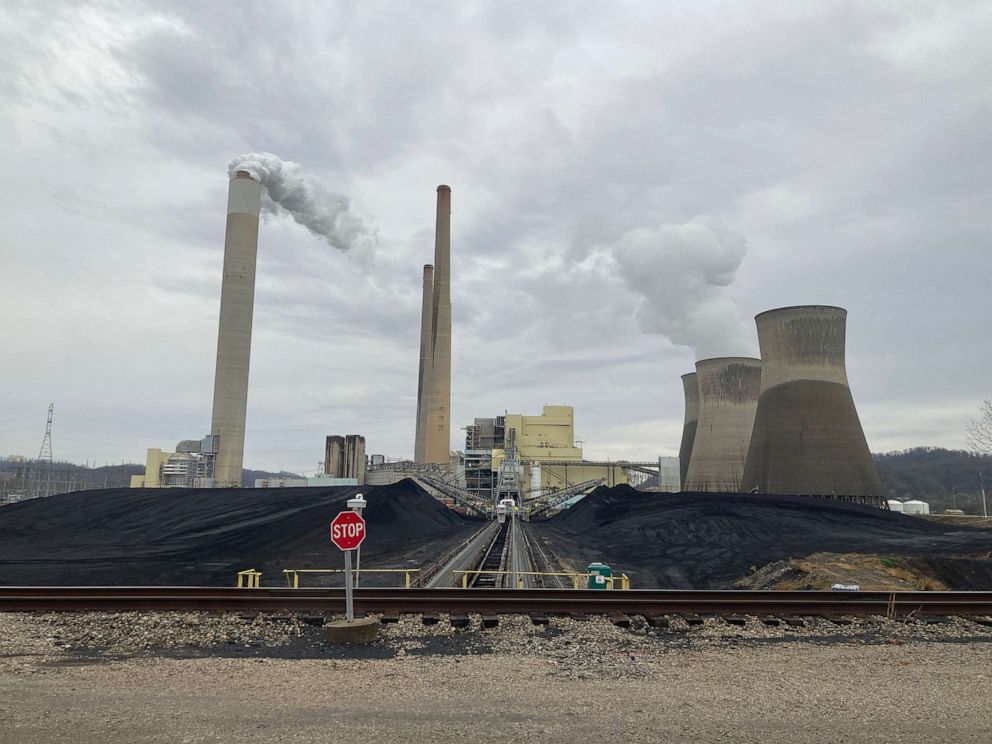Supreme Court limits EPA's ability to reduce emissions, fight climate change
The case involved regulating greenhouse gas emissions from power plants.
The Supreme Court on Thursday limited the Environmental Protection Agency's power to fight climate change.
The case involved how far the federal government could go in regulating greenhouse gas emissions from power plants.
The court held that Congress did not grant EPA the authority under the Clean Air Act to devise emissions caps based on the "generation shifting approach" the agency took in the Clean Power Plan, with Chief Justice John Roberts writing for the 6-3 conservative majority.

Roberts wrote that the only question before the court was "whether the 'best system of emission reduction' identified by EPA in the Clean Power Plan was within the authority granted to the Agency in Section 111(d) of the Clean Air Act. For thereasons given, the answer is no."
He wrote, "... our precedent counsels skepticism toward EPA's claim ... To overcome that skepticism, the Government must -- under the major questions doctrine -- point to "clear congressional authorization" to regulate in that manner.
"…Capping carbon dioxide emissions at a level that will force a nationwide transition away from the use of coal to generate electricity may be a sensible 'solution to the crisis of the day.' But it is not plausible that Congress gave EPA the authority to adopt on its own such a regulatory scheme in Section 111(d) [of the Clean Air Act]," Roberts wrote. "A decision of such magnitude and consequence rests with Congress itself, or an agency acting pursuant to a clear delegation from that representative body."
The three liberal justices dissented, with Justice Elena Kagan writing, "Today, the Court strips the Environmental Protection Agency (EPA) of the power Congress gave it to respond to “the most pressing environmental challenge of our time.”
She continued, "…The limits the majority now puts on EPA’s authority fly in the face of the statute Congress wrote. The majority says it is simply “not plausible” that Congress enabled EPA to regulate power plants’ emissions through generation shifting. But that is just what Congress did when it broadly authorized EPA in Section 111 to select the “best system of emission reduction” for power plants.
"The subject matter of the regulation here makes the Court’s intervention all the more troubling. Whatever else this Court may know about, it does not have a clue about how to address climate change. And let’s say the obvious: The stakes here are high. Yet the Court today prevents congressionally authorized agency action to curb power plants’ carbon dioxide emissions. The Court appoints itself—instead of Congress or the expert agency—the decisionmaker on climate policy. I cannot think of many things more frightening," Kagan wrote.
The court's decision in West Virginia v. EPA comes as global climate change exacts an increasingly dire human and economic toll on communities worldwide.
The landmark Clean Air Act of 1970 charged EPA with protecting human health from dangerous airborne contaminants, which the Supreme Court has twice affirmed to include greenhouse gasses.
The law currently lets the agency craft pollution limits based on the "best system of emission reduction" available, but there is disagreement over whether the law prohibits consideration of measures "outside the fence line" of a particular plant, such as shifting to alternative sources of power generation or emission trading programs.
The Biden administration, environmental advocates and public health groups have said EPA's ability to robustly regulate U.S. power plant emissions is one of the most significant tools available for cutting earth-warming pollution and blunting the impacts of rising temperatures.
"The Supreme Court’s ruling in West Virginia vs. EPA is another devastating decision that aims to take our country backwards. While this decision risks damaging our nation’s ability to keep our air clean and combat climate change, I will not relent in using my lawful authorities to protect public health and tackle the climate crisis," President Joe Biden said in a statement.
The U.S. power sector is the nation's second-largest source of greenhouse gas emissions with more than 3,300 fossil fuel-fired power plants, including 284 coal-fired facilities, according to the Energy Information Agency.
"If we do not have the full extent of these tools, we will need all of the other tools in the toolbox," said Vickie Patton, general counsel of the Environmental Defense Fund. "And those tools may not be as effective and they might cost more."
The plaintiffs in the case -- a coalition of Republican-led states and coal and mining companies -- argued that overly-aggressive EPA regulation threatens to "reshape the power grids and seize control over electricity production nationwide," imperiling thousands of American jobs.
An estimated 1.7 million Americans work in fossil fuel industries, from mining to pipeline construction to electricity generation.
"If there are enormous decisions that have vast political and economic significance, Congress -- if they want an agency to deal with it -- should speak clearly to that issue," said Jeff Holmstead, a former EPA official who served during the George W. Bush administration and has represented clients challenging recent EPA emissions regulations.
The Supreme Court decided the case even though EPA does not currently have a power plant carbon dioxide regulation in force.
The Obama administration's Clean Power Plan, which first prompted the lawsuit in 2015, was temporarily blocked by the Court at the time and never took effect. The Trump administration subsequently proposed an alternative plan, but that was rescinded by President Biden. In the meantime, a lower court ruled the Clean Power Plan could be enforceable – even though Biden said he would not adopt it.
The EPA has said it expects to release Biden's plan for regulating power plant CO2 emissions shortly after the Supreme Court decision.
The White House has set a goal of cutting U.S. carbon pollution in half over the next decade and shift entirely to clean energy sources by 2035.
ABC News' Molly Nagle and Libby Cathey contributed to this report.